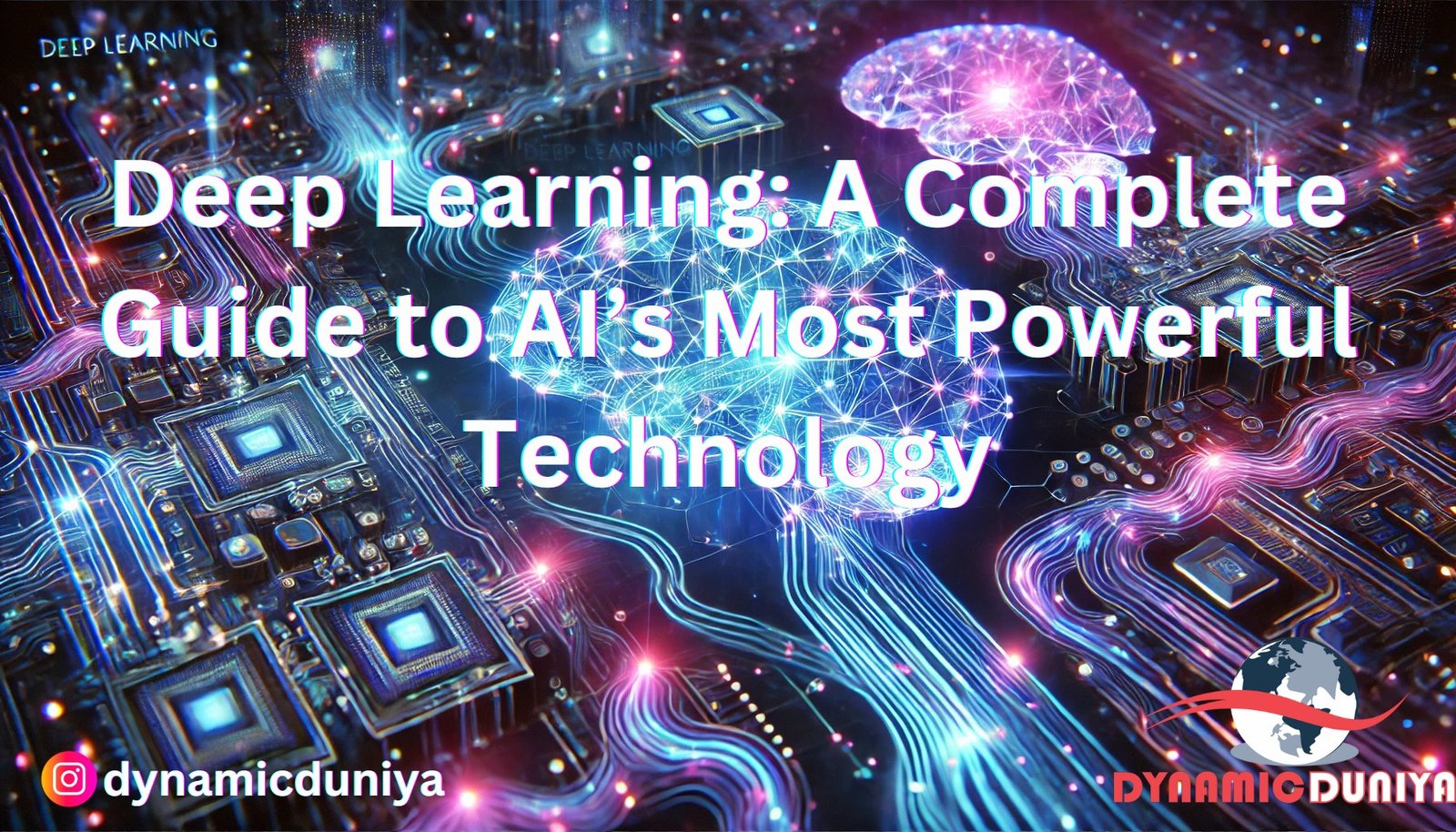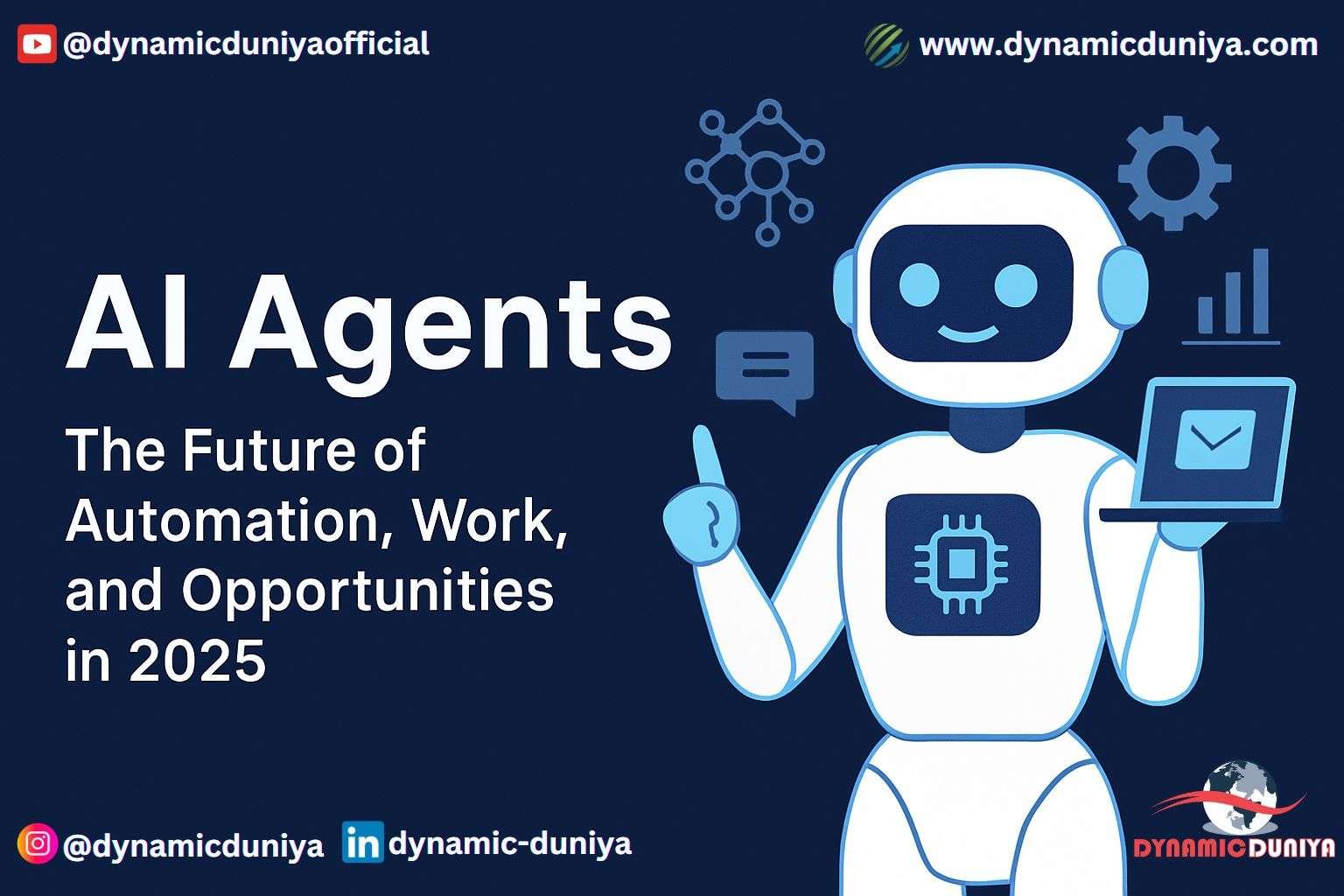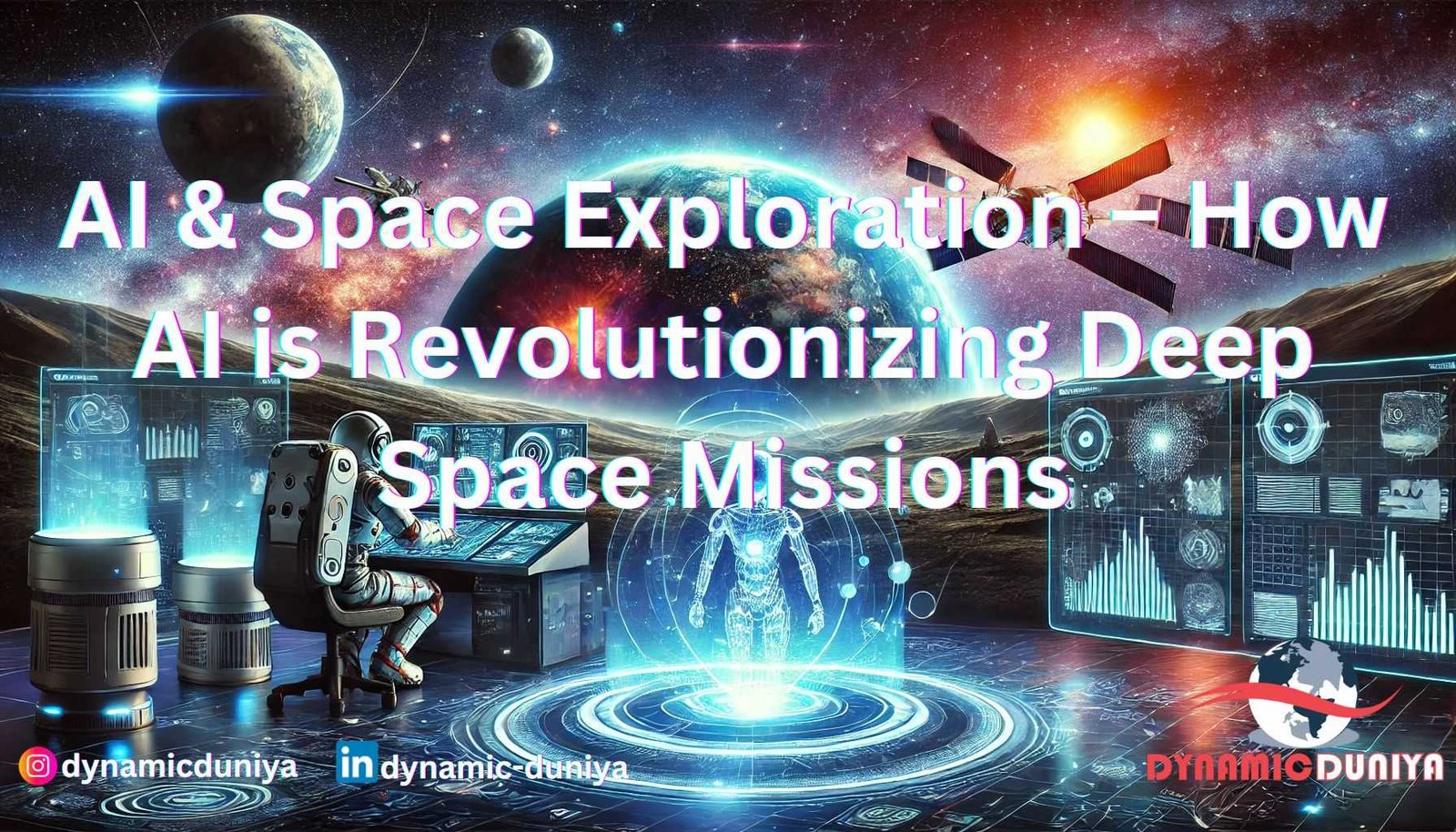Deep Learning (DL): The Core of Modern AI

Introduction
Deep Learning (DL) is a subset of Machine Learning (ML) that has revolutionized artificial intelligence (AI). It powers technologies such as self-driving cars, facial recognition, and advanced language models like ChatGPT. This blog provides an in-depth look into Deep Learning, its working principles, applications, and how you can start your journey in this field.
What is Deep Learning?
Deep Learning is a technique in Machine Learning that uses Artificial Neural Networks (ANNs) to process data in a way that mimics the human brain. These neural networks consist of multiple layers (hence the term "deep" learning), allowing them to automatically learn representations from data.
Unlike traditional Machine Learning, which often requires feature engineering, Deep Learning models extract features directly from raw data. This makes DL particularly useful for tasks involving complex patterns like images, speech, and text.
How Does Deep Learning Work?
Deep Learning relies on Neural Networks, which consist of multiple layers:
- Input Layer – Receives the raw data (e.g., an image, text, or numerical data).
- Hidden Layers – These layers perform complex transformations using mathematical functions like activation functions and weight adjustments.
- Output Layer – Produces the final prediction (e.g., recognizing a cat in an image).
Deep Learning models train using massive amounts of data and computational power, adjusting the weights of connections between neurons to minimize errors and improve accuracy.
Key Concepts in Deep Learning
- Artificial Neural Networks (ANNs) – The foundation of DL, inspired by the structure of biological neurons.
- Convolutional Neural Networks (CNNs) – Used for image processing and computer vision tasks.
- Recurrent Neural Networks (RNNs) – Designed for sequential data like time series, speech, and text.
- Transformers – Advanced architectures used in Natural Language Processing (NLP), such as GPT models and BERT.
- Autoencoders – Used for feature extraction, anomaly detection, and data compression.
- Generative Adversarial Networks (GANs) – Create synthetic data and generate realistic images and videos.
Applications of Deep Learning
Deep Learning has transformed multiple industries. Some key applications include:
1. Computer Vision
- Facial recognition (used in smartphones and security systems)
- Autonomous vehicles (object detection and navigation)
- Medical imaging (detecting diseases like cancer from X-rays and MRIs)
2. Natural Language Processing (NLP)
- Language translation (Google Translate)
- Chatbots and virtual assistants (Siri, Alexa, ChatGPT)
- Sentiment analysis (customer feedback and social media monitoring)
3. Speech Recognition
- Voice assistants (Google Assistant, Amazon Alexa)
- Real-time transcription (Zoom, Microsoft Teams)
- Language learning apps (Duolingo)
4. Healthcare
- Drug discovery (predicting drug effectiveness)
- Personalized medicine (analyzing patient data)
- Disease detection (AI-assisted diagnosis)
5. Finance
- Fraud detection (monitoring unusual transactions)
- Stock market prediction (AI-driven trading)
- Customer service (AI chatbots for banking and financial support)
6. Generative AI
- Deepfake technology (synthetic media creation)
- Art and music generation (AI-generated artwork and compositions)
- Video game enhancements (creating realistic game environments)
Challenges in Deep Learning
Despite its potential, Deep Learning faces some challenges:
- Data Requirements – Requires large amounts of labeled data for training.
- Computational Cost – Needs high-performance GPUs and TPUs for training models.
- Black Box Nature – Difficult to interpret why a model made a particular decision.
- Ethical Concerns – Issues like bias in AI models and misuse of deepfake technology.
How to Get Started with Deep Learning
If you're interested in learning Deep Learning, here’s how you can start:
1. Learn the Basics
- Understand Linear Algebra, Calculus, and Probability.
- Gain knowledge of Python programming and libraries like NumPy and Pandas.
2. Study Deep Learning Frameworks
- TensorFlow – Developed by Google, widely used in AI research and applications.
- PyTorch – Popular in academia and research, developed by Facebook AI.
- Keras – A high-level API built on top of TensorFlow for easy implementation.
3. Take Online Courses
- Deep Learning Specialization – Coursera (Andrew Ng)
- Fast.ai Deep Learning Course
- MIT Deep Learning Lectures (YouTube)
4. Work on Projects
- Image classification using CNNs.
- Text generation using LSTMs or Transformers.
- Predicting stock prices with RNNs.
- Building an AI chatbot.
5. Join AI Communities
- Kaggle – Participate in competitions and projects.
- GitHub – Explore open-source Deep Learning projects.
- AI forums (Reddit, Stack Overflow, DeepLearning.AI).
Future of Deep Learning
The future of Deep Learning is promising, with advancements in:
- AI-powered Robotics – Machines that can think and act like humans.
- AI-generated Content – More realistic AI art, music, and videos.
- Brain-Computer Interfaces – AI that interacts with the human brain.
- Explainable AI – Making AI decisions more transparent and understandable.
Conclusion
Deep Learning is at the heart of AI innovations, transforming how machines understand and interact with the world. Whether you're an AI enthusiast, a data scientist, or a beginner looking to dive into this field, Deep Learning offers limitless opportunities for research, innovation, and career growth.
Are you ready to explore the world of Deep Learning? Start learning today and be a part of the AI revolution! 🚀
Random Blogs
- 10 Awesome Data Science Blogs To Check Out
- The Ultimate Guide to Machine Learning (ML) for Beginners
- SQL Joins Explained: A Complete Guide with Examples
- Window Functions in SQL – The Ultimate Guide
- Google’s Core Update in May 2020: What You Need to Know
- Understanding HTAP Databases: Bridging Transactions and Analytics
- Understanding SQL vs MySQL vs PostgreSQL vs MS SQL vs Oracle and Other Popular Databases
- Top 15 Recommended SEO Tools
- The Ultimate Guide to Starting a Career in Computer Vision
- Datasets for Speech Recognition Analysis
Prepare for Interview
- JavaScript Interview Questions for 5+ Years Experience
- JavaScript Interview Questions for 2–5 Years Experience
- JavaScript Interview Questions for 1–2 Years Experience
- JavaScript Interview Questions for 0–1 Year Experience
- JavaScript Interview Questions For Fresher
- SQL Interview Questions for 5+ Years Experience
- SQL Interview Questions for 2–5 Years Experience
- SQL Interview Questions for 1–2 Years Experience
- SQL Interview Questions for 0–1 Year Experience
- SQL Interview Questions for Freshers
- Design Patterns in Python
Datasets for Machine Learning
- Awesome-ChatGPT-Prompts
- Amazon Product Reviews Dataset
- Ozone Level Detection Dataset
- Bank Transaction Fraud Detection
- YouTube Trending Video Dataset (updated daily)
- Covid-19 Case Surveillance Public Use Dataset
- US Election 2020
- Forest Fires Dataset
- Mobile Robots Dataset
- Safety Helmet Detection
- All Space Missions from 1957
- OSIC Pulmonary Fibrosis Progression Dataset
- Wine Quality Dataset
- Google Audio Dataset
- Iris flower dataset
- Artificial Characters Dataset
- Bitcoin Heist Ransomware Address Dataset






